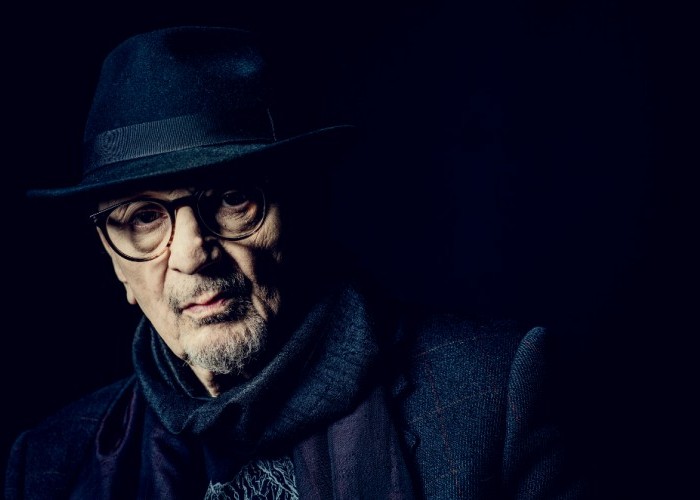Oct 28, 2025 10:47 AM
In Memoriam: Jack DeJohnette, 1942–2025
Jack DeJohnette, a bold and resourceful drummer and NEA Jazz Master who forged a unique vocabulary on the kit over his…

Tomasz Stańko (1942-2018)
(Photo: Jacek Poremba/Universal Music Polska)Growing up in post-World War II Poland, trumpeter Tomasz Stańko’s first experienced jazz music as a kind of outsider art. As a young man, the musician, who succumbed to cancer July 29 at the age of 76, would hear recordings on Voice of America broadcasts and occasionally would get to see it performed live, thanks to American artists playing in Europe as part of State Department-sponsored goodwill tours. One of his first concerts was seeing Dave Brubeck perform in 1958.
Those little sparks of inspiration were enough to fuel a diverse career that spanned five decades and found Stańko collaborating with the likes of Cecil Taylor, Gary Peacock and Terje Rypdal, among many others. And he managed to achieve a rare kind of success both in his home country and around the world.
“He was a huge star in Poland,” remembered Marcin Wasilewski, a pianist who started performing with Stańko during the early ’90s that has gone on to issue work through ECM Records. “I think he was the most popular jazz musician in Poland. He was just an idol for me as a musician and a composer and a performer.”
Stańko started playing professionally in the early ’60s, forming the Jazz Darins, a quartet with pianist Adam Makowicz that specialized in Ornette Coleman-inspired free jazz. He soon connected with Krzysztof Komeda, perhaps the trumpeter’s greatest influence. The pianist and composer invited Stańko to join his ensemble, which went on to produce Polish jazz classics like 1965’s Astigmatic and 1967’s My Sweet European Home.
“I loved this music, and it was a dream to play with him,” Stańko said in an October 2008 DownBeat story. “People don’t speak too much about it, but it was modern music for this time. He liked the same things as me—simplicity, lyricism and combining two things together, like predisposition to the tradition, but also open mind for free, modern things.”
Even after leaving Komeda’s orbit, Stańko continued to tip his cap to the composer. The 1970 album Music For K, recorded with a quintet featuring Zbigniew Seifert on alto saxophone and drummer Janusz Stefanski, featured five original compositions written in honor of the trumpeter’s former collaborator. And in 1997, Stańko released Litania, a collection of Komeda compositions recorded with an ensemble that included Rypdal, pianist Bobo Stenson and drummer Jon Christensen.
Since the ’70s, Stańko maintained an impressive and diverse pace. He led his own groups, including the synth-heavy Freelectronic and various quartets and quintets, dabbling in Miles Davis-inspired funk, experimental sounds, Latin jazz and chilly post-bop along the way. Stańko also joined forces with Alexander von Schlippenbach’s Globe Unity Orchestra and supported fellow Polish players like Edward Vesala and Michal Urbaniak in the studio and on stages around the world.
He found his greatest successes later in his career, as he continued a fruitful relationship with ECM. While he released a well-regarded album with the label in 1976 (Balladyna, featuring bassist Dave Holland), his run of recordings from the ’90s on, such as the 2009 release Dark Eyes, represented some of Stańko’s strongest work and his most commercially successful, selling thousands of copies in Poland.
Stańko also made sure to pay forward the opportunities that he was given as a young player, mentoring and encouraging up-and-coming jazz musicians in his home country. Some of those artists included members of a young trio led by Wasilewski who, while still in their teens, were invited by the trumpeter to join his quartet in 1994, and went on to record a pair of albums with him.
“For us, he was a special man, more of a musical father,” Wasilewski said. “When we started to play music with such an experienced musician, we were learning from a lot of things. Just playing with him was the biggest lesson we could have, more than the best music university. It was like a big adventure for us.”
Stańko is survived by his daughter Ania and a sister, and leaves behind a wealth of music that surely will continue to resonate throughout Poland and beyond.
“It’s a great loss for the jazz community of Poland,” said Wasilewski. “There’s an empty place now. I talked with him three weeks before he passed away and he felt good with what he has done. He felt successful with the music as a composer and as a musician. The last concert he did at the beginning of March, it was as great as always. Until the end, he was in very good shape. When he passed away, he was still the best.” DB

Jack DeJohnette boasted a musical resume that was as long as it was fearsome.
Oct 28, 2025 10:47 AM
Jack DeJohnette, a bold and resourceful drummer and NEA Jazz Master who forged a unique vocabulary on the kit over his…

Goodwin was one of the most acclaimed, successful and influential jazz musicians of his generation.
Dec 9, 2025 12:28 PM
Gordon Goodwin, an award-winning saxophonist, pianist, bandleader, composer and arranger, died Dec. 8 in Los Angeles.…

Flea has returned to his first instrument — the trumpet — and assembled a dream band of jazz musicians to record a new album.
Dec 2, 2025 2:01 AM
After a nearly five-decade career as one of his generation’s defining rock bassists, Flea has returned to his first…

Nov 13, 2025 10:00 AM
For results of DownBeat’s 90th Annual Readers Poll, complete with feature articles from our December 2025 issue,…

To see the complete list of nominations for the 2026 Grammy Awards, go to grammy.com.
Nov 11, 2025 12:35 PM
The nominations for the 2026 Grammy Awards are in, with plenty to smile about for the worlds of jazz, blues and beyond.…








